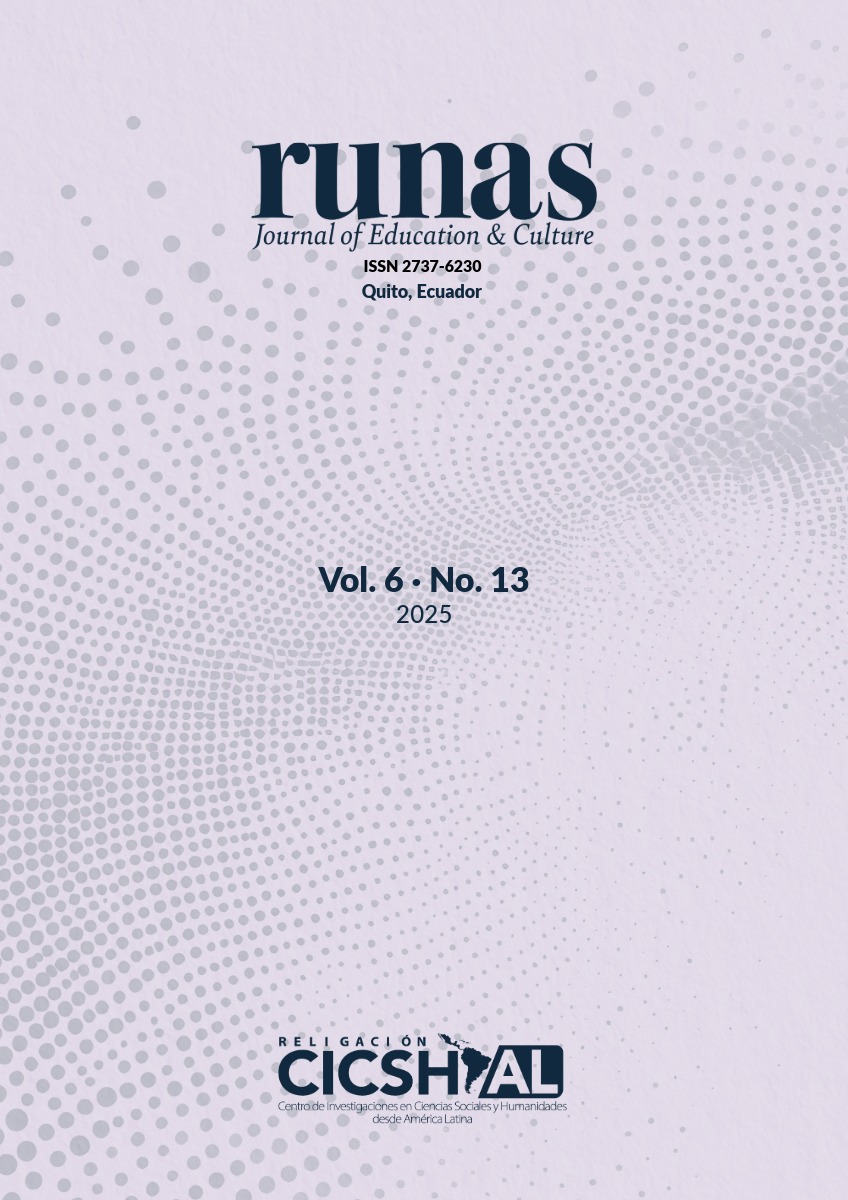Abstract
This study considers the auditor's work from a technical and ethical perspective, incorporating tools such as forensic auditing and the risk-based approach. It also highlights the importance of inter-institutional collaboration with organizations such as the Financial and Economic Analysis Unit (UAFE). The results show that the new regulatory framework redefines the auditor's role as an early warning agent, capable of detecting financial irregularities without compromising professional confidentiality. This function increases the technical standards of financial control and fosters a culture of transparency in organizations. Consequently, the greater the auditor's commitment to regulations and ability to identify risks, the more effective the auditor's work will be in preventing economic crime and protecting the national financial system. Auditors actively participate in the prevention of money laundering, with the goal of identifying and reporting suspicious transactions that contribute to reducing the incidence of tax crimes. This evidence of the Ecuadorian State's commitment to establishing effective mechanisms to strengthen the integrity of the financial system is reflected in the Money Laundering Law (Ley de Lavado de Astivos), which will be implemented starting July 2025.
References
Angulo Gaona, M. Á. (01 de 07 de 2017). El lavado de activos o blanqueamiento de capitales, su desarrollo normativo en el ámbito supranacional, su lesividad y su relación con el ordenamiento jurídico ecuatoriano. CAP Jurídica, 2(3), 15-57. https://doi.org/10.29166/cap.v2i3.1944
Asamblea Nacional del Ecuador. (2024). Ley Orgánica de Prevención, Detección y Combate del Delito de Lavado de Activos y de la Financiación de Otros Delitos.
Bacinello Ortuño, G., Gilio Amaya, J., & Kuzbyt, E. (2018). Lavado de activos y la responsabilidad del auditor externo [Tesis de licenciatura, Universidad Nacional de San Martín].
De la Torre, M. (2018). Utilización del sector financiero para el lavado de dinero: perspectiva desde la legislación ecuatoriana. Jurídicas CUC, 14(1), 145–166. https://doi.org/10.17981/juridcuc.14.1.2018.07
Domínguez Ramírez, J. (2020). El rol de la auditoría para la prevención de fraudes dentro de las PYMES. Universidad Estatal Península de Santa Elena.
Enriquez Bermeo, F. (2015). Ecuador en el circuito de lavado de activos. Fiscalía General del Estado.
Espinosa Jaramillo, M. T. (2024). Internal Control in Companies from the Perspective of the COSO. Management (Montevideo), 2. https://doi.org/10.62486/agma202428
Estévez Bonilla, A., Barona López, N., Espinosa Jaramillo, M., & Arcos Cueva, J. (2019). La auditoría de gestión y la efectividad en la cooperativa de transporte de carga en camionetas “Darío Guevara”. Revista Dilemas, (2).
GAFI. (2024). Estándares internacionales sobre la lucha contra el lavado de activos, el financiamiento del terrorismo y de la proliferación de armas de destrucción masiva. Biblioteca GAFILAT.
Hurtado-Guevara, R. F., & Casanova-Villalba, C. I. (2022). La Auditoría Forense como Herramienta para la Detección de Fraudes Financieros en Ecuador. Revista Científica Zambos, 1(1), 33-50. https://doi.org/10.69484/rcz/v1/n1/52
Isolauri, E., & Ameer, I. (2023). Money laundering as a transnational business phenomenon: a systematic review and future agenda. Critical perspectives on International Business, 19(3), 426-468. https://doi.org/10.1108/cpoib-10-2021-0088
Jara-Malla, G. M., Salinas-Chica, P. K., & Orellana-Uloa, M. N. (2022). Ghost companies and their relationship with money laundering, a corruption. Microfinance Planning and Control, 22-32. https://doi.org/10.35429/jmpc.2022.22.8.22.32
Lara Moncayo, J. A. (2023). Resolución Nro. Superintendente De Economía Popular y Solidaria Subrogante.
León, X. V. (2023). Factores de la auditoría aplicada al lavado de activos en el Ecuador. Revista científica de la universidad del pacífico, 11(1).
Ley Orgánica. (2017). Reglamento General A La Ley Orgánica De Prevención Detección Y Erradicación Del Delito De Lavado De Activos Y Del Financiamiento De Delitos, decreto No.1331.
Putri, A. (2023). Enhancing Transparency and Trust through Effective Financial Statement Audits. Advances in Managerial Auditing Research, 1(3), 103 -113.
Rozas Flores, A. E. (2008). El rol de la Auditoría ante el lavado de activos. Quipuamayoc. https://doi.org/10.15381/quipu.v15i30.5255
Sam Han, T. K. (2011). Governance Role of Auditors and Legal Environment: Evidence from Corporate Disclosure Transparency. Symposium on Auditing and Regulation, 21(1), 29-50. https://doi.org/10.1080/09638180.2011.599928
Vemuri, S., Jahnavi, P., Manasa, L., & Pallavi, D. (2023). Money Laundering: A Review. REST Journal on Banking, Accounting and, 2(2), 19-24. https://doi.org/10.46632/jbab/2/2/2

This work is licensed under a Creative Commons Attribution-NonCommercial-NoDerivatives 4.0 International License.
Copyright (c) 2025 Johanna Vega, Luis Fernando Cundulle Cundulli, Anabel Ante





